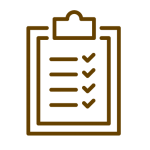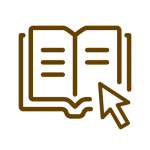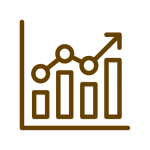Resources to Teach and Learn Data Science in High School

More than 3,000 students added data science to their schedule last year in 51 high schools across Southern California, according to Education Week. The course, designed by experts at UCLA, is Introduction to Data Science, and initiates students to one of the fastest-growing industries in the world.
Data scientist is ranked third on LinkedIn’s 2020 “emerging jobs” report (PDF, 11.2 MB), based on its projected growth of 34% with most jobs in major tech cities like New York, San Francisco and Seattle. It’s indicative of a larger trend in U.S. education: A 2015 Gallup poll indicates that 9 in 10 parents of seventh- to 12th-graders want their child to learn more computer science skills in school.
How can data science complement the push for coding and computer science classes? CS classes pose unique challenges for educators, who can be inhibited by a lack of subject knowledge, technical training and resources. Meanwhile, data science is a more holistic category that encompasses some coding and computer science skills but also has an emphasis on storytelling, pattern finding, and visualization.
“Data science taps into students’ natural reasoning abilities and helps them understand the world,” said Carole Sailer, a math teacher at North Hollywood High School in Los Angeles Unified, speaking to EdSource. “It doesn’t matter what they want to be — a nurse, a police officer — data science exposes students to state-of-the-art technology and helps them develop their powers of reasoning. It really does inspire kids.”
Continue reading to learn how teachers can incorporate data science into their classrooms, how students can learn at home and what kinds of resources are available.
Learning Data Science at Home
Data science can be complementary to existing curriculum or accessible for students learning at home. Below are a few core areas of data science explained, plus some implementations for at-home learning.
Research Design
Research design is the strategy to execute a research project and, generally, answer one of two primary questions: What is happening? Why is this happening? Good research design predicts challenges and includes a plan for each step of the process.
How can I learn this at home?
The basic components of research design can be practiced in almost any setting. Look over the five steps of experimental research and think about what experiments you can run in your own home or backyard. For example: How can you determine the average number of dogs that walk past your home every day?
Data Analysis
Data analysis is the process of inspecting, cleaning and manipulating datasets to discover new or useful information. This can help guide decision-making, power an application or be used to tell a story. Professional data scientists often use tools like Python or R to wrangle and automate large datasets.
How can I learn this at home?
There are a lot of tutorials and coding classes online for beginners looking to familiarize themselves with Python or R. The Python visualizer can be helpful while learning programmatic thinking and error checking. Check out the technical tools section below for more information. Scratch, a visual block language, is also a great place to begin for first-time coders.
Machine Learning
Machine learning uses statistics to find patterns in data and create a computer algorithm that improves the more it is implemented. Data scientists build a model based on sample data that trains the computer on how to make decisions.
How can I learn this at home?
Kaggle competitions can be a great way to practice or build machine learning skills. Kaggle, a machine learning and data science community, hosts hundreds of competitions for open entry. Read more about getting started with Kaggle competitions.
Data Visualization
Data visualization is telling a story with data using design or graphics. Visualizations encompass everything from interactive dashboards to static infographics. A great data visualization is clear, compelling and accessible for the audience.
How can I learn this at home?
Data visualization professionals recommend regular sketching and doodling. Grab a pen and some paper and imagine how you would show any information around you, in as many ways as possible. Giorgia Lupi and Stefanie Posavec’s Dear Data project can provide some inspiration on where to start.
31 Tools and Lesson Plans to Teach Data Science
Table of Contents:
Lesson Plans and Activities
Technical Tools and How-Tos
Readings and News
Datasets
Career Planning
To support educators and students, MastersInDataScience.org gathered resources and tools that can be used to teach and learn data science skills. Below is a collection of lesson plans, tutorials, datasets and career guides to assist that development.

Lesson Plans and Activities↑
Bootstrap Data Science Pathway, Bootstrap World: lesson plans and materials (including slide presentations and student workbooks) for a full data science curriculum. Bootstrap modules align with a variety of curriculum standards such as Common Core and CSTA K-12.
Introduction to Data Science Curriculum, UCLA and LAUSD: UCLA-created data science curriculum and lab slides used in the Introduction to Data Science course. This class satisfies some Common Core State Standards for High School Statistics and Probability. Anyone can review and test-drive the technology, but full implementation requires training and technical support.
Databasic.io: toolkit to introduce the concept of working with data, including analyzing spreadsheets with WTFcsv and data networks with ConnectTheDots. Each tool comes with an Activity Guide for educators.
Computation Lesson Plans, Knowledge @ Wharton High School: math and problem-solving lesson plans from the Wharton School of the University of Pennsylvania’s youth program. These utilize National Business Education Association (NBEA) standards and are business-centric lessons.
Data Nuggets: classroom activities using science research projects to teach data analysis, exploration and finding patterns. High school educators should look for Level 3 activities.
Data Lessons and Activities for Grades 9-12, National Geographic Resource Library: classroom activities suitable for grades 9–12 using data from a variety of domains such as earth science, geography and U.S. history. Teachers can further refine the list, compiled by National Geographic Education, to target their subject area.
Classroom Ready Data Resources, National Oceanic and Atmospheric Administration: classroom-friendly curricula and activities to explore NOAA atmospheric and oceanic data. Each resource includes a Teacher Reference Page that lists which national standards the activity meets.
Dynamic Data Science, The Concord Consortium: dynamic data science activities using the free Common Online Data Analysis Platform (CODAP) from nonprofit The Concord Consortium.

Technical Tools and How-Tos↑
Storybench Tools for Educators, Northeastern University: “living syllabus” of tutorials on R, data visualization, graphic design and storytelling from Northeastern University’s School of Journalism.
My First Python Notebook: detailed, step-by-step guide to analyzing data using the Python language and Jupyter notebooks. This tutorial uses data from the California Civic Data coalition on money in politics.
Teaching Resources, Partners in Data Literacy: handouts and tutorials to teach students data science skills like organizing data, graphing and data analysis strategies.
Google’s Python Class: lecture videos, written materials and exercises to learn Python, from setup to utilities. This free resource is recommended for people with “a little bit of programming experience.”
Introduction to Python: open curriculum for teachers and students to learn Python as their first coding language. It covers the basics of object types, loops, functions and classes.
Hour of Python, Trinket: collection of tutorials and challenges to test your Python knowledge. This resource also includes lessons in Spanish, Chinese and Korean.

Readings and News↑
Finding Stories with Spreadsheets by Paul Bradshaw: book with an overview of what the author calls “interviewing data” in Excel. Readers learn helpful formulas, shortcuts and strategies for finding patterns in datasets.
How to Lie with Statistics by Darrell Huff: book on some of the most popular statistical techniques and methods and how they can be used to deceive and confuse.
FiveThirtyEight: publication from Nate Silver that uses data analysis to report on politics, sports, economics and more. Reporters also regularly publicize their data and methodology with each piece.
Literature and Other Resources About Data Literacy, Partners in Data Literacy: collection of articles, web resources and books on data and quantitative literacy.
What’s Going On in This Graph?, The New York Times: weekly free feature from The New York Times that allows students to participate in a live discussion about news-related graphs and visuals. New posts pause while school is out-of-session, but there is a What’s Going On in This Graph? archive of previous features available.

Datasets↑
Census Reporter: interactive exploration of U.S. Census Bureau data meant to help journalists find and visualize data.
U.S. Department of Education Data: government data covering students, educators and schools of all levels. Users can find information on costs, demographics, discipline, safety and more across thousands of datasets.
Data Is Plural newsletter: five unique, interesting or newsworthy datasets delivered to your inbox weekly. The Data Is Plural Archive can be a great place to look for inspiration or typically hard-to-find data.
Data.gov: searchable database housing the U.S. government’s open data, ranging from county to federal level.
OECD Data: charts, maps, tables and research on global economies from the Organisation for Economic Co-Operation and Development.
Gallup Poll Topics and Trends: data on polling and trends across all of Gallup’s key topics, including civil liberties, sports, religion and housing.
Awesome Public Datasets: list of open, mostly free datasets and their sources for more than 30 topics areas.

Career Planning↑
Data Scientist: common steps to becoming a data scientist and characteristics of a successful data science professional.
Business Analyst: what a business analyst does and outlines the common steps to become one.
Computer Scientist: how to think like a computer scientist, as well as the qualifications and likely job description.
Data Analyst: role of a data analyst and the kinds of tools they tend to use in their day-to-day work.
Statistician: statisticians’ responsibilities, qualifications and the job outlook. This page also includes an interview with a statistician about their work.

